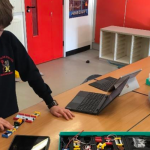By Asha Alexander, Principal & CEO at GEMS Legacy School
I think, you know, the curricula around the world have to keep changing. It has to keep evolving. We’ve all gotten used to following something that has already been laid out, and as an educator, I’ve constantly been questioning practice. Why are we teaching? Is the curriculum relevant? Is it practical? Is it useful for children? We continue teaching content which may be outdated, and has not much relevance to children. And it’s up to us as educators to place what we value at the centre of the classroom. And whatever is on our curriculum is what we value. And if we can’t find a place for things like sustainability or nutrition in the curriculum, then we are failing our children.
So we can’t wait for governments or, you know, school boards to mandate this change. So I kept asking myself, is what we teach useful to children? How are they going to apply themselves? Because when growing up, we did a lot of reusing and recycling, but in this consumerist approach that children are faced with, we’re churning out more and more waste. The carbon footprint is increasing, and it’s just becoming difficult to manage. Children need to use the academic learning they get in practical ways. They need to understand the why of, you know, climate science. It’s not just they will do anything we say they will do composting, they will clean the beach, they will plant trees, but they should know why they’re doing it. Both for themselves and for the teachers, it’s very crucial to understand climate science.
It’s not just they will do anything we say they will do composting, they will clean the beach, they will plant trees, but they should know why they’re doing it. Both for themselves and for the teachers, it’s very crucial to understand climate science.
Asha Alexander
And I found that using applications like Twin Science, there were challenges, they were engaged throughout in the activities in which they took part in. They learned more than what was there, you know, in their science topics. And we didn’t find it very difficult to map the objectives into the curriculum. If you really look at it, it’s there in geography, it is there in science, but we need to find those connections. So we took that effort. I think educators fail when they are not willing to go to the edges not willing to try something new for fear of making mistakes. We definitely made mistakes. We modified our approaches. We changed the way we began to instruct. We placed a large question in front of the children so children would find the solutions with the understanding they had. And if you really allow children to participate in these and they’re engaged, I find they come up with brilliant solutions. They use robotics, they use drones, they and the classes that have these experiences are far more exciting and engaging for children than somewhere where someone is just spewing content. I’m nothing against content, you need content, but you need to also teach them how to use that content to solve problems in the world and once students take ownership of these problems, they feel they have done something good to the world. I feel that’s what keeps them motivated.
I think educators fail when they are not willing to go to the edges not willing to try something new for fear of making mistakes.
Asha Alexander
So it wasn’t very difficult. It was just that I felt all schools needed to just change tack if you keep saying no I can’t do it. Because it’s there’s no space in the curriculum. It’s up to us as educators to find that space. And there is always space. You may have to change the way you word the objective. You might have to link a couple of objectives. The problem based or the project based learning works very well for us. And that’s what we employ at our school.



